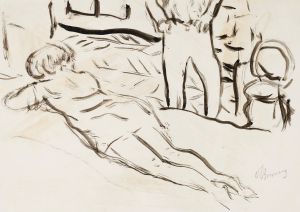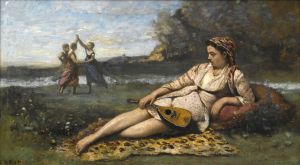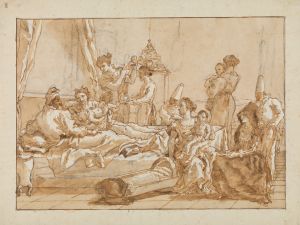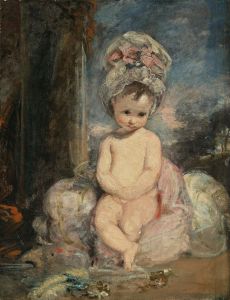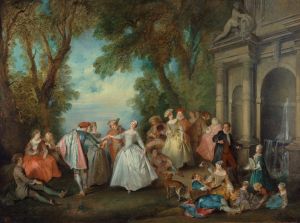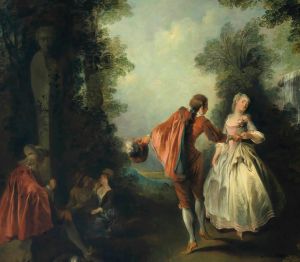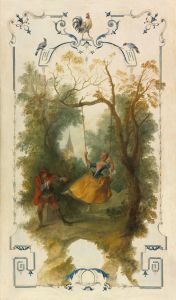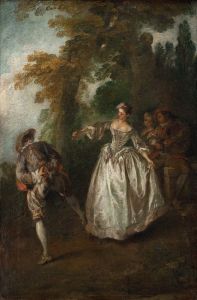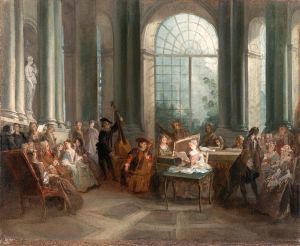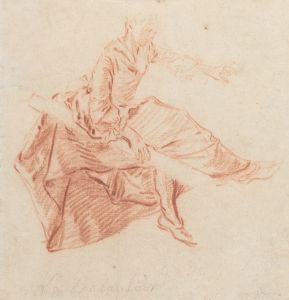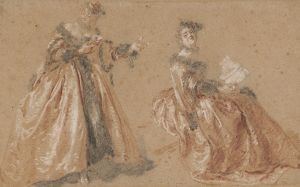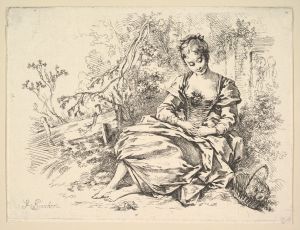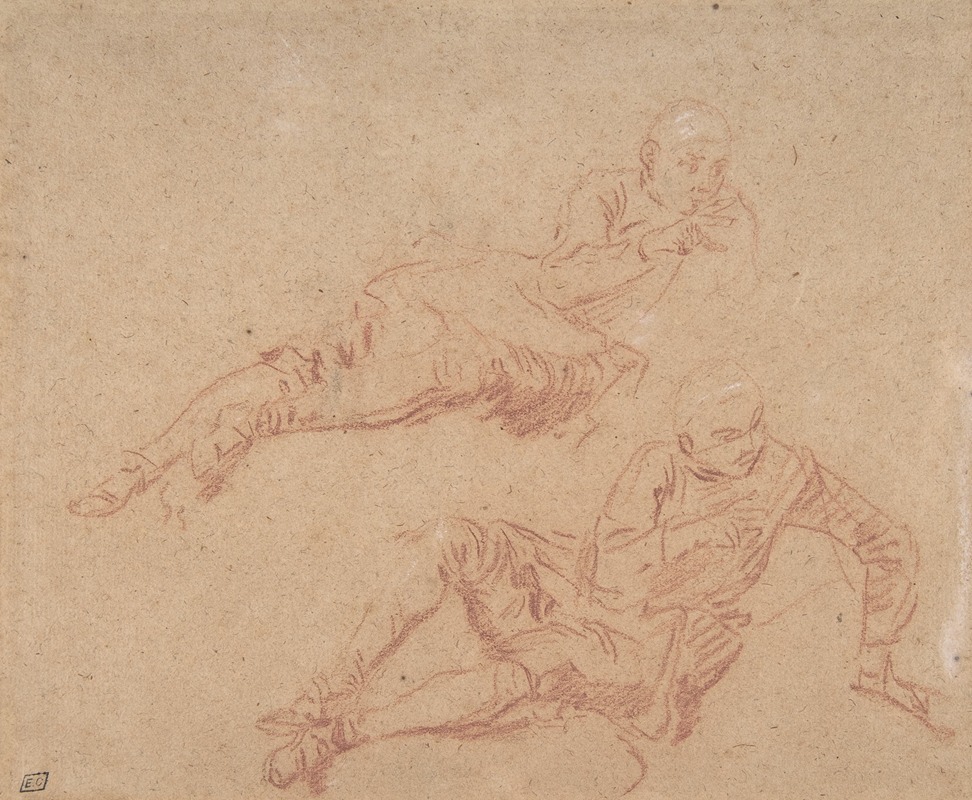
Two Studies of Reclining Youth
A hand-painted replica of Nicolas Lancret’s masterpiece Two Studies of Reclining Youth, meticulously crafted by professional artists to capture the true essence of the original. Each piece is created with museum-quality canvas and rare mineral pigments, carefully painted by experienced artists with delicate brushstrokes and rich, layered colors to perfectly recreate the texture of the original artwork. Unlike machine-printed reproductions, this hand-painted version brings the painting to life, infused with the artist’s emotions and skill in every stroke. Whether for personal collection or home decoration, it instantly elevates the artistic atmosphere of any space.
Nicolas Lancret (1690–1743) was a prominent French painter known for his contributions to the Rococo style, which was characterized by its lightness, elegance, and use of playful themes. Lancret was a contemporary of Antoine Watteau and was influenced by his work, though he developed his own distinct style that garnered him significant acclaim during his lifetime.
"Two Studies of Reclining Youth" is one of Lancret's works that exemplifies his skill in capturing the subtleties of human form and expression. While specific details about this particular piece are limited, it is consistent with Lancret's broader oeuvre, which often included studies and sketches that served as preparatory works for larger compositions. These studies were crucial for artists of the time to explore form, posture, and the play of light and shadow on the human body.
Lancret's works typically feature scenes of leisure and entertainment, often set in pastoral or garden settings, reflecting the Rococo era's fascination with themes of love, nature, and the pleasures of life. His paintings are noted for their vibrant colors, fluid brushwork, and the delicate rendering of figures, which convey a sense of movement and grace.
In "Two Studies of Reclining Youth," Lancret likely focused on the anatomy and posture of the figures, capturing the relaxed and natural poses that were a hallmark of his style. Such studies were essential for artists to perfect their technique and to ensure that their figures appeared lifelike and dynamic in their final compositions.
Lancret's influence extended beyond his lifetime, as his works were collected by notable patrons and continued to be appreciated for their charm and technical proficiency. His ability to depict the subtleties of human interaction and the elegance of the Rococo lifestyle made him a favorite among the French aristocracy and art collectors.
While "Two Studies of Reclining Youth" may not be as widely recognized as some of Lancret's larger and more detailed paintings, it represents an important aspect of his artistic process. Studies like these provided the foundation for his more elaborate works and offer insight into the methods and practices of 18th-century French painters.
Lancret's legacy is preserved in numerous collections, including the Louvre Museum in Paris, which houses several of his works. His paintings continue to be studied and admired for their contribution to the Rococo movement and for their reflection of the cultural and social dynamics of 18th-century France.
In summary, "Two Studies of Reclining Youth" by Nicolas Lancret is a testament to the artist's skill in capturing the human form and his contribution to the Rococo style. While specific information about this piece is limited, it is representative of Lancret's broader body of work, which remains influential in the history of art.





